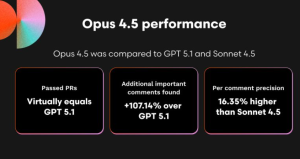When discussing American holiday traditions, two celebrations inevitably dominate the conversation: Thanksgiving and Christmas. While both hold special places in the hearts of Americans, they represent fundamentally different values, traditions, and cultural meanings. Understanding how Americans view these holidays reveals much about the nation's character, priorities, and evolving relationship with celebration itself.
The Great Debate: Which Holiday Matters More?
Ask any American which holiday is more important, and you'll likely receive passionate, deeply personal responses. Recent surveys show that Thanksgiving tops Christmas in popularity, with 98% of Americans aware of the holiday and 80% saying they like it, compared to Christmas's 94% awareness and 77% favorability rating. Yet Christmas remains the country's favorite holiday, with about 36% of Americans identifying it as their top choice.
This apparent contradiction reveals an important truth: Americans measure holiday importance in different ways. Popularity isn't the same as commercial impact, and cultural significance doesn't always translate to personal preference.
The Fundamental Differences
Thanksgiving: Gratitude Without Commercialization
Thanksgiving stands as America's most uniquely national holiday. Unlike Christmas, which is reserved for specific religious groups, Thanksgiving transcends cultural and religious boundaries. The holiday's secular nature allows everyone—regardless of faith, background, or beliefs—to participate fully in its traditions.
Thanksgiving has remained loyal to its old-school identity of food, family, gratitude, naps, and football. It's emotional but not commercial—you don't buy matching pajamas for it, send greeting cards, or face demands from children for a gift haul. This simplicity represents both the holiday's greatest strength and, from a retail perspective, its biggest “weakness.”
The fourth Thursday of November brings families together for a singular purpose: sharing a meal and expressing thanks. There are no gift lists to stress over, no decorations that need to match a Pinterest board, no pressure to create picture-perfect moments. As one person recently observed, Thanksgiving is just like Christmas but without the gift-giving expectations and stress.
Christmas: Celebration Meets Consumer Culture
Christmas, in contrast, has evolved into America's most commercially significant holiday. The average American spends around $902 during the December holiday period, while Thanksgiving averages $325 per household. This financial disparity reflects fundamentally different holiday philosophies.
In tumultuous times, people turn to their faith and family, and no other holiday captures both as well as Christmas. The celebration of Jesus Christ's birth, along with hope for His peace on earth, the joy of being together, traditional holiday customs, gift exchanges, and delicious holiday meals are for many the highlights of the year.
Yet this commercial aspect creates a double-edged sword. While Christmas generates joy through giving and receiving, it also introduces stress, financial pressure, and sometimes unrealistic expectations. The holiday has become so intertwined with consumer culture that stores no longer pretend—the moment the last trick-or-treater leaves, out come the reindeer and wreaths, not because Americans wanted it but because stores can squeeze an extra six weeks of revenue from holiday spirit.
The Gift-Giving Divide
Perhaps no difference between these holidays is more striking than their relationship to gift-giving.
Thanksgiving: Presence Over Presents
Americans overwhelmingly do not exchange gifts at Thanksgiving. When asked about the tradition, responses consistently indicate that Thanksgiving focuses on gathering and gratitude rather than material exchange. Guests might bring a bottle of wine or a dish to share, but wrapped presents would feel out of place.
This absence of gift-giving creates a different kind of generosity. During Thanksgiving, people are both the giver and the gift, with the return-gift being gratitude for every presence at the table. People are thankful for the family and friends that give to their lives, those that make their lives special and joyful. The meal itself becomes a symbolic representation of shared appreciation rather than individual exchange.
Some families appreciate this so much that they've deliberately shifted their gift-giving to Thanksgiving to preserve Christmas's spiritual focus. However, these remain exceptions rather than widespread practice.
Christmas: The Season of Giving (and Spending)
In 2024, the average U.S. consumer expected to spend over one thousand dollars on holiday gifts for the first time ever, with spending previously remaining between $700 and $950. Christmas gift-giving has become a massive economic driver, influencing retail performance, employment patterns, and consumer behavior for months.
The tradition brings joy but also pressure. Statistics show Americans gift an average of eight people during the holiday season, with recipients including parents, children, siblings, friends, coworkers, and more. Each relationship requires consideration, budget allocation, and often anxiety about selecting the “right” gift.
Cultural Significance and American Identity
Thanksgiving: The Purely American Holiday
Thanksgiving isn't political—it's purely American. It's the one holiday uniquely designed to make people pause, reconnect, and recalibrate. There are no gifts, costumes, or commercial agendas. It's a 24-hour reminder that what people already have is enough.
This holiday emerged from the nation's own history, representing values Americans want to believe define their country: hospitality, gratitude, abundance shared with others, and the importance of family connection. Thanksgiving allows the country to tell a story of its origins—people leaving far-off lands, struggling under harsh conditions, and ultimately being welcomed to America's bounty—that children, particularly immigrant children, could easily understand and share with their families.
Thanksgiving is truly the most important of American holidays because, more than even Christmas or the Fourth of July, it is a time when American families reunite, express gratitude for one another, and feel closer than at any other time.
Christmas: The Global Celebration with American Flair
While Christmas originates from Christian religious tradition celebrated worldwide, Americans have developed their own distinctive Christmas culture. From elaborate light displays to specific music traditions, from Santa Claus mythology to the Hallmark movie phenomenon, American Christmas has become its own cultural export.
Christmas is bigger than Thanksgiving in terms of time off from work and school. American schools and universities are out for two weeks at Christmas compared to just a couple of days for Thanksgiving. This extended break, combined with Christmas's religious and cultural significance, gives it a different weight in annual planning and family logistics.
The Evolving Relationship Between the Two
In recent years, the relationship between these holidays has become increasingly contentious. Christmas decorations and marketing now appear immediately after Halloween, drowning out Thanksgiving entirely. Black Friday, once beginning on Friday morning, has crept backward—first to midnight, then Thursday evening, then Thursday afternoon.
This encroachment has led to cultural pushback. Many Americans lament that Thanksgiving is being swallowed by Christmas commercialization, losing its distinct identity in the rush to begin holiday shopping. The early onset of Christmas celebrations makes one wonder why the rush, especially when Thanksgiving deserves its own recognition.
Yet both holidays continue to evolve. Some families blend traditions, creating hybrid celebrations that work for their circumstances. Others deliberately separate them, using Thanksgiving to practice gratitude and Christmas to celebrate faith or cultural tradition.
What These Differences Reveal About American Values
The contrast between Thanksgiving and Christmas reflects America's ongoing tension between competing values:
Simplicity vs. Abundance: Thanksgiving celebrates having enough. Christmas celebrates abundance and the joy of excess—more gifts, more decorations, more everything.
Secular Unity vs. Religious Tradition: Thanksgiving brings all Americans together regardless of faith. Christmas maintains religious roots while also serving secular cultural functions, creating complexity about its meaning and purpose.
Reflection vs. Celebration: Thanksgiving asks Americans to pause and appreciate what exists. Christmas invites active celebration, creation, and anticipation.
Anti-Commercial vs. Commercial: Thanksgiving resists commercialization almost entirely. Christmas has become America's most economically significant holiday, for better and worse.
Inward vs. Outward: Thanksgiving turns attention inward—to family, to blessings already received, to quiet gratitude. Christmas often turns outward—to giving, to creating experiences, to sharing joy with others.
A Nation That Needs Both
Ultimately, Americans don't need to choose between these holidays. Each serves distinct purposes in the national psyche.
Nearly 93% of Americans celebrate Christmas, while 88% observe Thanksgiving. These high participation rates suggest both holidays successfully meet different needs.
Thanksgiving provides a pause button in an increasingly frenetic world. It asks nothing except presence and gratitude. In an age of constant consumption and comparison, this simplicity feels increasingly precious.
Christmas, despite its commercial complications, offers something else Americans need: hope, light during the darkest season, an excuse for generosity, and permission to create magic for children and adults alike. The religious aspects provide spiritual grounding for believers, while secular traditions offer cultural cohesion.
The tension between these holidays reflects broader American struggles with materialism, work-life balance, and authentic connection. In Thanksgiving, Americans glimpse who they want to be: grateful, family-oriented, content with what they have. In Christmas, they see who they often are: busy, generous but stressed, caught between sacred and commercial impulses.
Both holidays matter. Both deserve protection from the forces that would dilute their distinct characters. And both reveal truths about American culture that extend far beyond turkey and tinsel.
As the holiday season approaches each year, Americans continue navigating the complex relationship between these two celebrations, trying to honor the best of both while avoiding the worst pitfalls of each. In doing so, they're not just planning parties—they're negotiating what matters most, what constitutes true celebration, and how to maintain meaningful tradition in a rapidly changing world.
Whether your family prefers Thanksgiving's quiet gratitude or Christmas's joyful abundance—or finds meaning in both—the key lies in celebrating with intention, focusing on connection rather than perfection, and remembering that the best holiday traditions are those that bring people together in genuine appreciation for one another.









